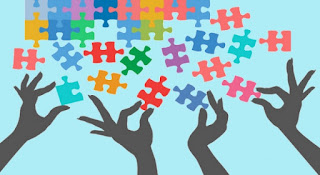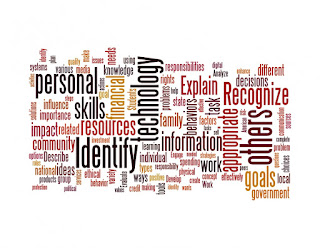Culture has always been a passion of mind,
so I am thrilled that it is a topic regularly accompanied by education and
teaching. However, in some cases it unfortunately is not discussed in a
positive manner. Instead, sometime it is necessary to look at a topic from an
oppressed standpoint in order to gain insight into how to improve the
situation. The metaphor of an ‘invisible knapsack’ represents the privileges
that ‘white’ people have that are taken for granted.
http://nationalunitygovernment.org/content/white-privilege-unpacking-invisible-knapsack
Growing up in a small town, I had little
opportunity to experience diversity and gain a more concrete understanding of
diversity and privilege. Fortunately, my social circle did not have any strong
negative attitudes towards anyone. This allowed me to grow up without having
strong prejudice beliefs. Coming to university, I learned about so many more
cultures, but also gained a stronger understanding of what privileges I had
previously taken for granted. These ‘invisible’ privileges had never occurred to
me, which is something I am not proud to admit.
This raises the question… if it is
invisible, how as teachers can we identify this and take the appropriate steps
to promote change? There is no simple answer, talking about oppression can
raise many difficult questions, but I think it is an important topic to
education children about.
I would suggest the following steps to
create a safe and diverse classroom:
·
Identify your own viewpoints
and preexisting biases
·
Address issues in the classroom
directly
·
Be a good role model to
students
·
Provide opportunities for
integration
·
Encourage open communication
·
Self-reflect constantly and
build on your experiences
A fantastic way to teach students about
white privilege in the classroom is through an activity that I have previously
learned about. Students are given a list of situations that are examples of the
daily effects of white privilege. For instance, ‘I can watch television and my
race is usually widely represented’. There are two ways to potentially go about
implementing this activity. I would either provide my students with a checklist
so they may do this privately. Or, an alternative would be to have the whole
class sitting, and get the students who believe each statement applies to them
to stand up. It is important to facilitate a class discussion after this is
completed in order to build on these ideas and concepts.
Peggy McIntosh shares this great example of
sentences that represent privilege.
I like this activity because it can be
extended to talk about other forms of oppression too. In this case, cultural
literacy and critical literacy are being discussed, however I would expand it
to include mental health literacy, media literacy, or even financial literacy.
Our life experiences cause us as teachers
to naturally have beliefs and values that are ingrained in our minds. In order
to move past this, we need to UNLEARN ideas that may contribute to racism and
prejudice within the classroom. I strive to make myself a better person, and a
better teacher by doing so.
https://andreaamyjackson.wordpress.com/category/positionality-and-privilege/




